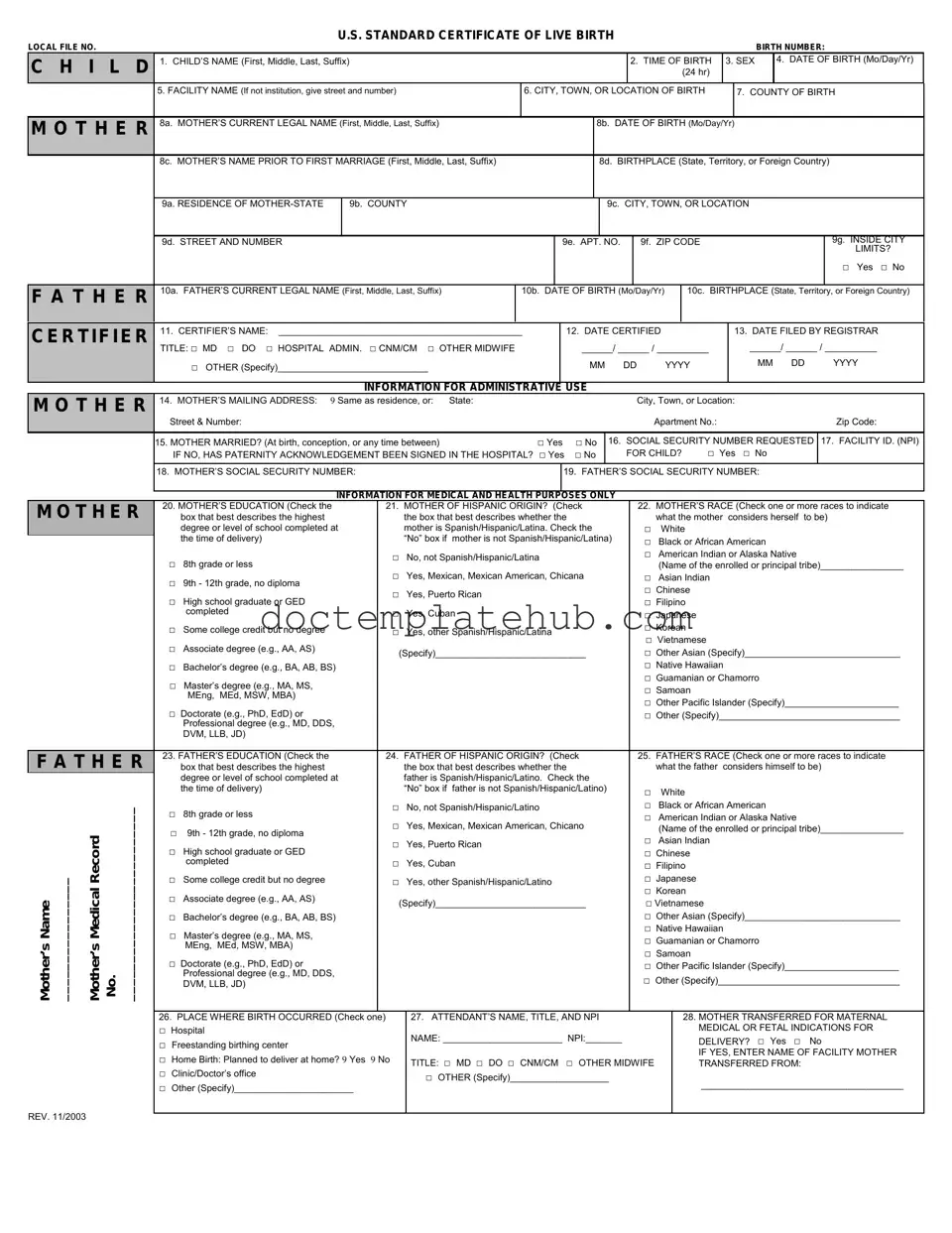What is the CDC U.S. Standard Certificate of Live Birth form?
The CDC U.S. Standard Certificate of Live Birth is an official document used to record the birth of a child in the United States. This form captures essential information about the newborn, including the child's name, date and place of birth, and details about the parents. It serves not only as a legal record of the birth but also as an important document for obtaining a Social Security number and other identification documents later in life.
Who is responsible for completing the Certificate of Live Birth?
The responsibility for completing the Certificate of Live Birth typically falls to the attending physician, midwife, or hospital staff. They gather the necessary information shortly after the birth occurs. However, parents should also be involved in reviewing the details to ensure accuracy. Once completed, the form must be filed with the appropriate state vital records office to be officially recognized.
How can I obtain a copy of my child's birth certificate?
To obtain a copy of your child's birth certificate, you will need to contact the vital records office in the state where your child was born. Most states offer online services, but you can also request a copy by mail or in person. You will typically need to provide identification, the child's details, and possibly a small fee. Be sure to check the specific requirements for your state, as they can vary.
What should I do if there is an error on the birth certificate?
If you discover an error on the birth certificate, it’s important to address it promptly. Most states have a process for correcting mistakes, which may involve submitting a correction request along with supporting documents. This could include proof of the correct information, such as a hospital discharge summary. Contact your state’s vital records office for detailed instructions on how to proceed.
Is the information on the Certificate of Live Birth confidential?
Yes, the information on the Certificate of Live Birth is generally considered confidential. Access to this document is restricted to certain individuals, such as the parents or legal guardians of the child. However, laws regarding access to birth records can vary by state. It's advisable to familiarize yourself with your state's regulations to understand who can access the information and under what circumstances.
